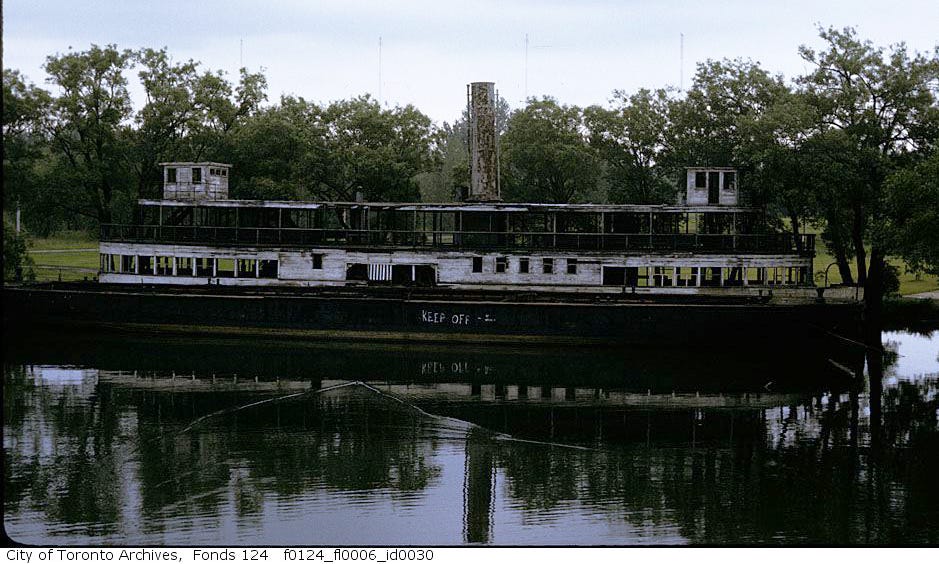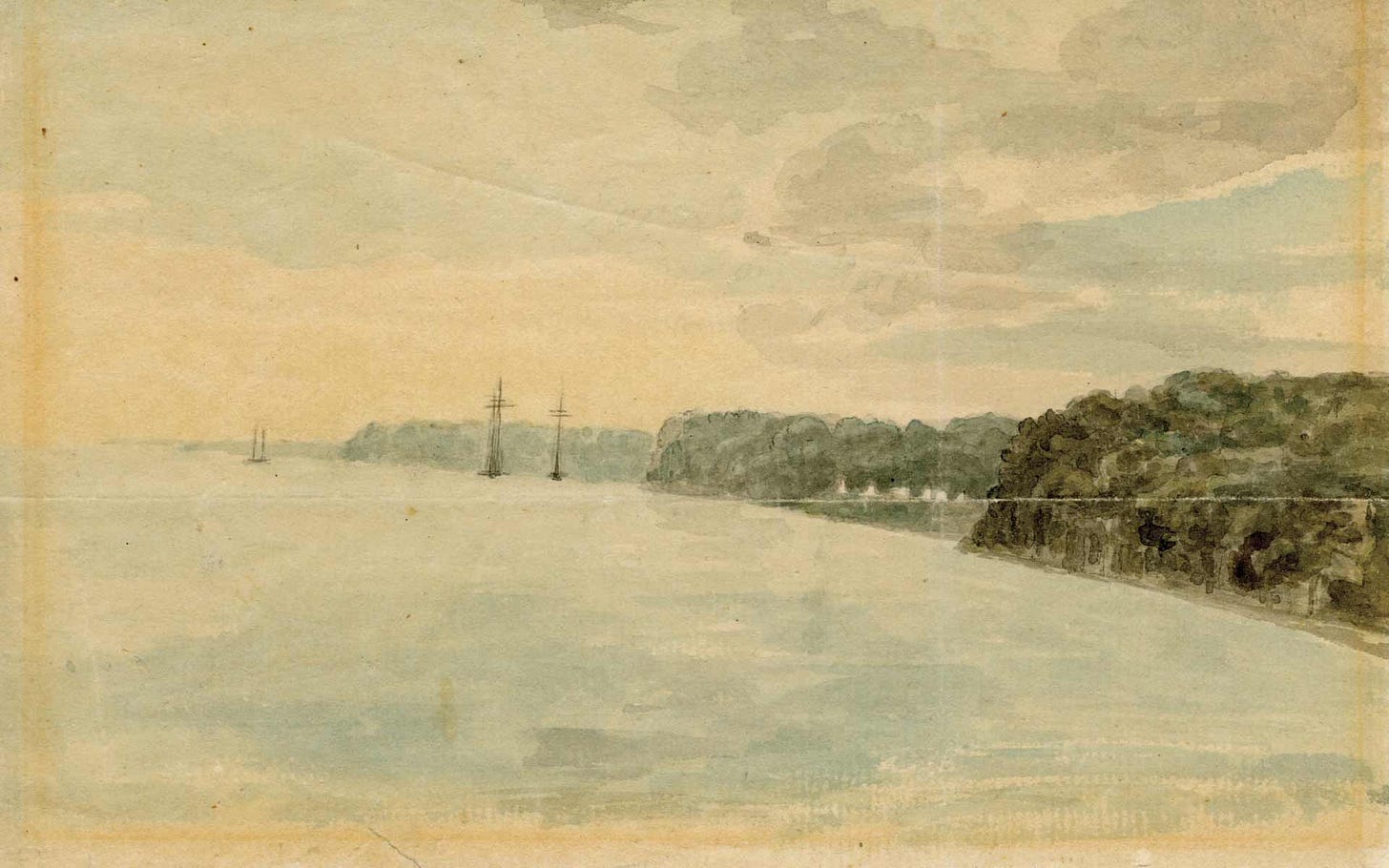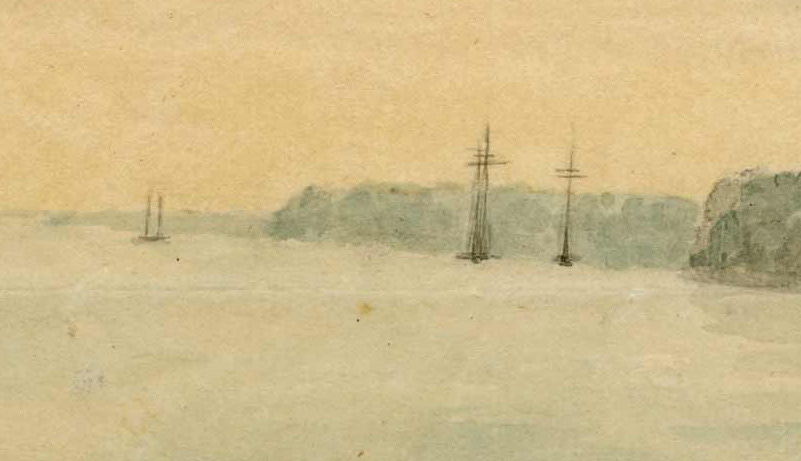Welcome to The Toronto History Weekly!
A newsletter filled with heritage news & stories from the city's past.
Welcome to the first edition of The Toronto History Weekly! My goal is to make this newsletter a one-stop-shop for everything that’s happening in the world of Toronto history — all the latest heritage news and event listings — plus a place to share the stories behind some of the city’s most fascinating archival images, artifacts, and historical figures.
It will (as you’ve already guessed) arrive in your inbox once a week. And I’m going to be offering the first month or two absolutely free so you can check it out and get a sense of what it’s like before I try to convince you to stick around long-term for a few dollars a month. So if you like the newsletter, please feel free to share it far and wide (there’s a button at the bottom).
Now, let’s dive in!
EB ZEIDLER & HIS ESCAPE FROM EAST GERMANY
NEWS — I’m afraid the first edition of The Toronto History Weekly begins with some sad news: the architect behind some of our city’s most iconic landmarks, including Ontario Place and the Eaton Centre, passed away last week. Eb Zeidler left a deep mark on Toronto — and I'll link to some articles about that legacy below — but for my part I thought I'd tell you a story about a time before he came to Canada…
Eberhard Zeidler was born in Germany in the 1920s — those hopeful jazz-filled years of the Weimar Republic. He was still a kid when Hitler seized power, and a teenager when the Second World War broke out; he signed up to serve on a navy destroyer at the age of seventeen. He wrote about the war in his autobiography: how he and his ship joined the siege of Leningrad, watching Russian bombs exploding all around him, pulling dead bodies from the icy sea, feeling like he'd stumbled into a newsreel.
In fact, he almost certainly would have died on that boat if it weren't for his captain.
Zeidler was selected for special training to become an officer. So, when his ship made one of its visits to port, he set off down the gangplank — his first few steps on his way to the naval academy.
But then, suddenly, just before he reached shore, the ship's alarm sounded. The rules were clear: since Zeidler still hadn't set foot on solid ground, he was expected to rush back on board and get ready for action. But as he raced back up the gangplank, his captain spotted him: "Did you hear anything just now, you idiot?"
Zeidler took the hint, turned around, and never saw his captain again. The destroyer was sunk by British bombers. There were more than two thousand sailors on the seven ships in their flotilla. Only twenty-two would survive.
When the war finally came to an end, Zeidler was a shadow of his former self. Many of his friends were dead. He worried his family was too; he eventually had to cross over into Communist East Germany to find them. He'd even forgotten how to laugh. "At nineteen," he remembered, "I was an old man."
It was studying architecture that brought him back to life. Hitler had shut down the famous Bauhaus art school, but now some of the old professors were trying to start it back up again. Zeidler spent nearly three years there, studying, learning, leading what he called an exalted life. "We drew. We built. We dreamed. We danced."
But it wasn't long before Zeidler's life was back in danger. The Soviets were in control of East Germany and they weren't interested in artistic freedom. They were cracking down on the school. One of the design professors began to suspect he was going to be arrested, and he turned to Zeidler for help. He asked the student to stop by his apartment to see whether any secret police were waiting for him. They were. Zeidler found two of them standing outside. And when one of them asked him for a light, they got a good look at his face.
This time, it was one of Zeidler's fellow students who saved his life: a friend who'd been recruited as a Soviet informant. He told Zeidler the police were on to him. They knew he'd been helping the professor, so he was in grave danger. Zeidler fled. He didn't even stop to grab his things, just rushed straight from the school's dining hall to the border with two other friends.
Their first attempt to sneak across into West Germany failed. They were caught, but they were lucky; they managed to talk their way out of custody and try again the next night.
The second time, they got even luckier. As they crawled through the bushes under a moonless sky, they found themselves face to face with the barrels of two guns. They'd been caught again — and this time, they couldn't think of any good excuses.
So, it must have seemed like a miracle when it turned out the Russian soldiers who'd found them weren't Russian at all. They were Germans recruited into the Soviet army — and not only did they feel sympathy for their countrymen, they actually knew one of Zeidler's friends.
The guards let them pass. Eb Zeidler had escaped East Germany.
It was just a few years later that he came to Canada. He'd heard the country needed architects, so he filled out an immigration form, and then forgot about it — until a letter arrived from the Canadian government telling him he had a job offer. One rough ocean voyage and a long train ride later, he arrived at the offices of an architectural firm in Peterborough… only to find they didn't actually have an opening for him after all.
But Zeidler wouldn't take no for an answer. Instead, he took a seat at a drafting desk, got to work anyway, and hoped no one would kick him out.
They never did. Within a few years, he was a full partner. And a few years after that, he moved to the firm's Toronto office. That's where he really began to make his mark.
Over the next few decades, he would design some of the most recognizable buildings in our city: not just Ontario Place and the Eaton Centre, but the atrium for Sick Kids, the Toronto Centre for the Arts (where I spent the strange 2003 summer of SARS and the Blackout working as a security guard, wandering the building alone after dark), the redesign of the Gladstone Hotel, the Queen’s Quay Terminal…
And his work wasn’t limited to Toronto. You’ll find Zeidler’s buildings all over our country and beyond, including Vancouver’s sailed-topped Canada Place, built for Expo 86.
“There was a time,” architecture critic Alex Bozikovic once wrote, “when this country was thinking and building on a grand scale, and Zeidler … played a crucial role.”
It was in Toronto that the architect became close friends with Jane Jacobs — she even joined his book club — and he began incorporating her ideas, combining them with his own Bauhaus roots. (When asked about her book, The Death and Life of Great American Cities, Zeidler said, “It was like reading the New Testament for the first time.”) He wasn’t just concerned with designing impressive buildings, but trying to ensure they’d fit within a walkable, human-centered city.
“Architecture isn’t just one thing,” he told Bozikovic, “it’s everything. Where I am sitting here, how people arrive here, how you feel when you come into the building — all these things matter.”
That philosophy would have a lasting impact on our city. And it would help transform that modest architecture firm from Peterborough into a powerhouse. Today, Zeidler Architecture Inc. has offices not just in Toronto, but in Calgary, Vancouver, Victoria, Beijing…
There's even one in Berlin, just a couple of blocks from where the Wall once stood.
Read more:
John Lorinc on “Growing Up In Eb Zeidler’s Toronto”
AZURE takes a look back at Zeidler’s Canadian work
Alex Bozikovic’s 2013 profile of Zeidler at the Globe or via the Toronto Public Library
Ziedler’s autobiography, Buildings Cities Life: An Autobiography of Architecture (which is where I found the found the photo of Zeidler in uniform above) is available as a reference book through the Toronto Public Library
THE TRILLIUM WILL SAIL ON!
NEWS — I’ve been a bit worried about Toronto’s oldest ferry. The City has been planning to replace its aging ferry fleet for a while now, and I wasn’t sure what that would mean for the oldest of them all: the 112 year-old Trillium.
Last week, there was news. A staff report recommends replacing nearly all the ships with electric ferries over the next 15 years — part of the City’s goal of reducing its net carbon emissions to zero by 2040. But the plan would also save one of the old ferries: the Trillium would be kept around for occasional service.
The PS Trillium first set sail on Dominion Day in 1910 — what we now call Canada Day — christened with a bottle of champagne smashed across the hull by an 8 year-old girl; the granddaughter of a local politician. And while the boat was originally owned by the private Toronto Ferry Company, it became part of the municipal fleet when the City took over the service.
The ferry has already survived one close call. In the 1950s, it looked like the Trillium was doomed. It was taken out of service and left to rot away in a lagoon on the islands for a couple of decades…
…before being saved, refurbished and brought back into service in 1973.
The new ferries will all be designed to look like the old ones — which is, of course, nice for aesthetic heritage-y reasons — but it’s unclear whether they’ll do anything to improve access to the island, as Shawn Micallef pointed out on Twitter:


WHAT TORONTO LOOKED LIKE THE WEEK IT WAS FOUNDED
PAINTING — One of thing I’m planning for this newsletter is to dive into the stories behind some of the city’s most fascinating archival images, artifacts and historical figures. And what better place to start than with an image from the moment our city was founded.
This is Toronto in July 1793. It was painted by Elizabeth Simcoe, wife of John Graves Simcoe — the lieutenant-governor who had just arrived to build a new capital for his new province of Upper Canada.
The capital had originally been on the far side of the lake (in what we now call Niagara-On-The-Lake), but Governor Simcoe wasn’t thrilled with that spot. The vulnerable little town was just across the river from the United States and Simcoe didn’t trust the Americans one bit. He’d fought against them during the American Revolution and he was convinced it was only a matter of time before they invaded the Canadian colonies. So, he figured he should move his capital away from the border as quickly as he could.
That summer, he sent some soldiers north across Lake Ontario to a spot where a big bay was formed by a long sandbar (the peninsula that would eventually become the Toronto Islands). It was the perfect place to build his new town; with only one way into the harbour, the capital would be easy to defend when the Americans eventually did invade.
Simcoe’s soldiers arrived in July and got to work, felling the giant old trees that towered above the mouth of a creek that would become known as Garrison Creek. They were clearing the way for the military base that would defend the entrance to the harbour: Fort York.
In this painting, you can see the little white shapes of the tents the soldiers have pitched at the mouth of the creek:
And those soldiers were soon joined by Governor Simcoe and his family: his wife Elizabeth, three of their children, a white cat with grey spots, and a big Newfoundland dog named Jack Sharp.
The painting also shows the masts of the British warships that have brought them all here from Niagara:
The family pitched their own tent at the mouth of the creek. (A very fancy one, with wallpaper and wooden floors. 1700s glamping.) And in the weeks and months to come, Elizabeth Simcoe would document the city’s founding days, keeping a detailed diary and painting watercolours like this one.
But this artwork isn’t just a record of the summer our city was born. It’s also a reminder that the history of this place stretches back much further than that. The forests and waters Elizabeth Simcoe painted were here long before the settlers arrived, of course — by then, this place had already been home to Indigenous people for thousands and thousands of years: the Mississaugas, the Haudenosaunee, the Wendat, and their ancestors.
TORONTO HISTORY EVENTS
REMNANTS OF MID-CENTURY TORONTO: A VIRTUAL DISCUSSION
January 19 — 6pm — Online — Heritage Toronto
“Join us for a virtual discussion about ‘Remnants of Mid-Century Toronto’, a collection of photos by Vik Pahwa documenting the sometimes beautiful, sometimes neglected collection of mid-century structures that still stand today, dotting Toronto’s urban landscape. Panellists: Photographer Vik Pahwa and Editor Matthew Blackett Moderator: Philip Evans, Principal at ERA Architects.”
Free to attend, but pre-registration is required.
A HISTORY OF WESTON
January 20 — 7:30pm — Online — The Etobicoke Historical Society
“Weston’s history dates back to the 1790’s when Simcoe made his first land grants. Weston’s first settlers were attracted to this area by its rich timber resources and the water-power potential of the Humber River. Cherri Hurst and Mary Lou Ashbourne will relate how Weston grew, and talk about the structures that were present in 1867 and are still standing as part of a vibrant neighbourhood that is proud of its rich history and heritage. “
Admission is limited to members of the Etobicoke Historical Society. Annual memberships are available for $25.
INNOVATION IN ITS TIME: THE WORLD FIRST TYPEWRITERS
January 25 — 6:30pm — Online — The Riverdale Historical Society
“Meet Martin Howard, Toronto collector, historian, and repairman, who for more than a quarter of a century has been building a unique collection of the world’s earliest typewriters.”
Free to attend if you join the Riverdale Historical Society’s mailing list.
FOUND OBJECTS: AN ARCHEOLOGICAL INVESTIGATION OF THE PORT LANDS
January 27 — 7pm — Online — Town of York Historical Society
“The revitalization of sections of Toronto’s waterfront is underway, which will prevent flooding within the Don Valley and create new greenspaces in the Port Lands. During excavation of the new Don River channel, a large deposit of twentieth century ‘garbage’ was uncovered, including some surprising objects. Join Scott Eckford, Archeologist at the Toronto and Region Conservation Authority (TCRA), as he discusses the history of the Port Lands and recent archaeological investigations in this virtual presentation.”
$6.32 for non-members; free for members.
MY UPCOMING EVENTS
FROM HOGTOWN TO DOWNTOWN: A HISTORY OF TORONTO IN 10 WEEKS
My online course kicks off next week! The history of Toronto is filled with fascinating stories that teach us about ourselves and our community. In this ten-week online course, we'll explore the city's past from a time long before it was founded, through its days as a rowdy frontier town, and all the way to the sprawling megacity we know today. How did Toronto become the multicultural metropolis of the twenty-first century? The answer involves everything from duels to broken hearts to pigeons.














❤️🙏
Congratulation ! This is Great !